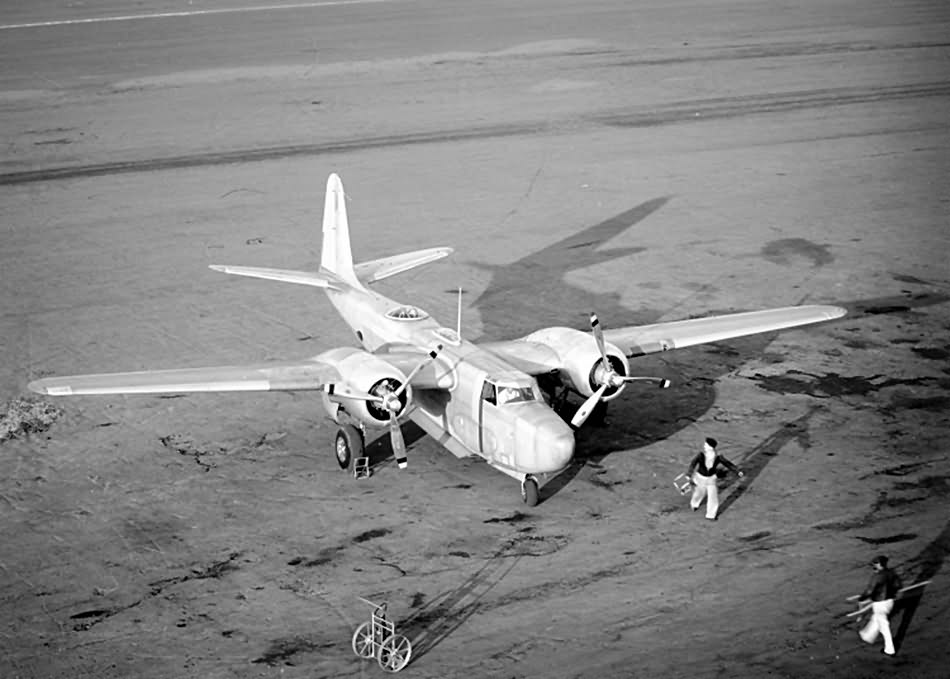Although the 7B retained the general profile of the 7A, it was slightly larger. The overall length remained similar to the 7A, but the wingspan increased by 6 feet to 61 feet (18.59 meters). The tricycle landing gear was maintained, along with the general wing layout, featuring engine nacelles that extended both below and slightly above each wing surface. A notable change was the addition of two Pratt & Whitney Twin Wasp S3C3-G engines, each providing 1,100 bhp at 2,700 rpm and powering constant-speed three-bladed propellers. The maximum design weight rose from 9,500 pounds to 15,200 pounds (6,900 kilograms). The interchangeable observation area was replaced by a conventional enclosed bomb bay beneath the high-mounted wing.
A new feature was the interchangeable nose section: one variant offered a bombardier position, and the other incorporated additional fixed machine guns. Both versions included four fixed .30-caliber guns, two on each side of the fuselage below the cockpit in blisters. Additionally, there were two flexible .30-caliber guns in the aft fuselage, one in a manually operated turret on the top and one in a barbette on the lower aft fuselage. The interchangeable attack nose had two additional .30-caliber fixed guns and two .50-caliber fixed guns, marking one of the first times the larger guns were proposed for an attack aircraft. The bomber-nose version met the requirements of Specification 98-102, while the attack-nose feature likely showcased the potential for increased firepower, a concept that would appear again three years later in the A-26 Invader designed under Heinemann’s direction.
Throughout 1938, four companies finalized their designs and built prototypes. Douglas constructed the 7B, completing it in early autumn 1938 at the El Segundo plant. The prototype’s first flight occurred on October 26, 1938, at Mines Field, piloted by Douglas Senior Vice President and General Manager Carl Cover. The aircraft was assigned the manufacturer’s serial number 379 and classified as an ‘observation’ airplane. Interestingly, a second serial number, 380, was assigned to an unbuilt Model 7C, also categorized as an ‘observation’ aircraft, but the fate of the 7C proposal remains unclear. The 7B was company-owned and may have had a civil registration number, though no records confirm this. Early photographs show the 7B unmarked with a protective finish on its aluminum alloy skin, which was eventually polished, and standard Air Corps rudder markings and insignia were applied.
The 7B embarked on a test-flight program scheduled to culminate in an Air Corps test program at Wright Field in March 1939. Following the first flight, modifications were made to the tail configuration. The horizontal stabilizer was moved forward directly under the vertical stabilizer, and a significant positive dihedral was introduced to the tail surfaces to stiffen the structure and improve handling. Otherwise, the aircraft flew well, was very maneuverable, and met performance specifications. The 7B had a top speed of 304 mph (489 km/h) at 5,000 feet, a service ceiling of 25,700 feet, and a combat range of 1,350 miles (2,172 km) at 161 mph (259 km/h), although whether these figures were calculated or measured is unclear.
